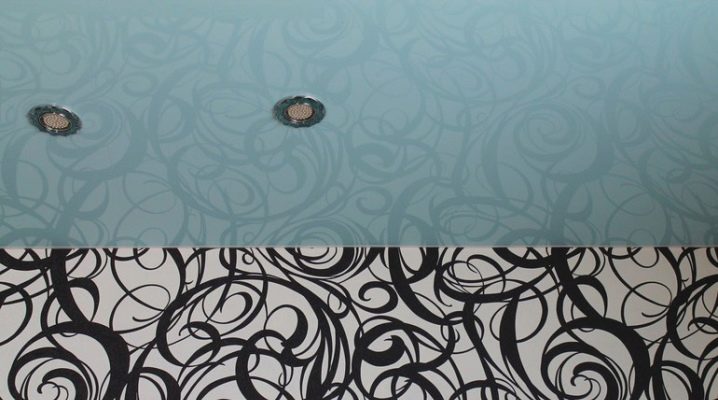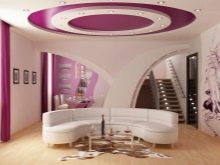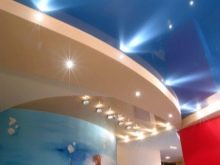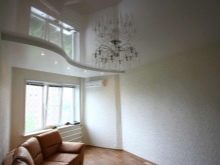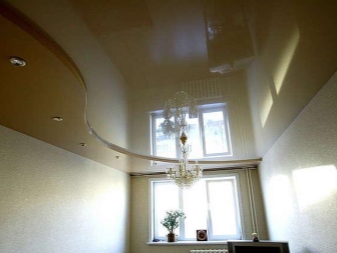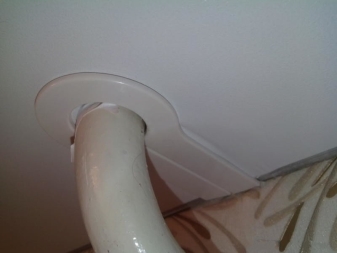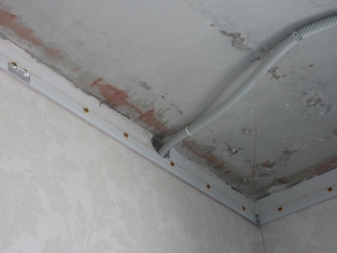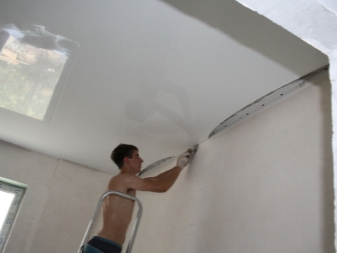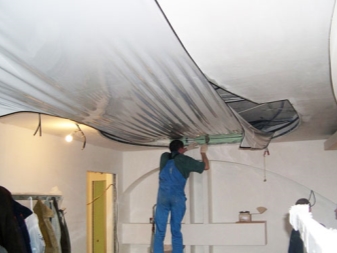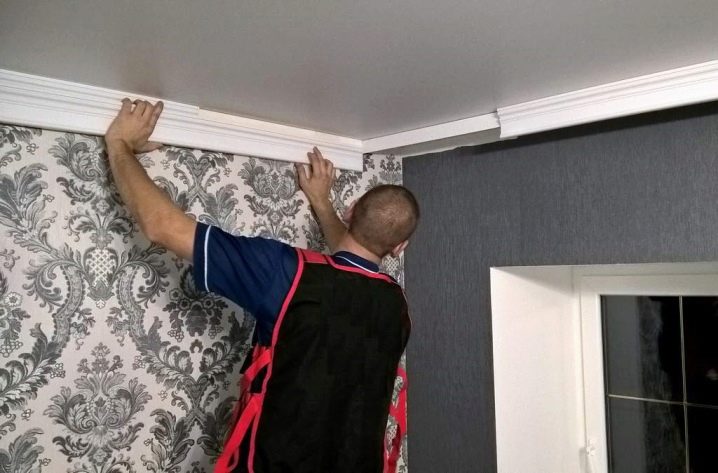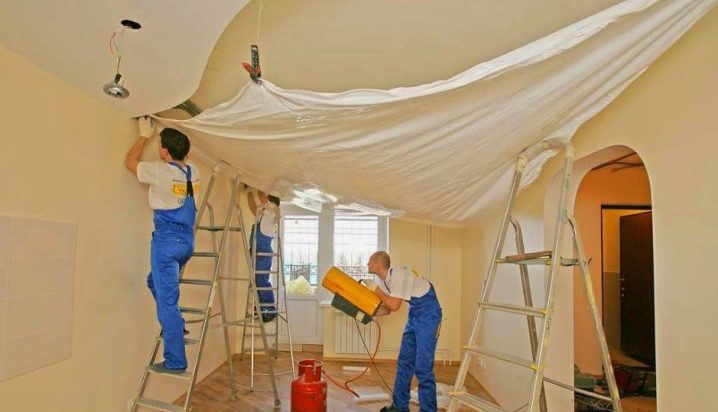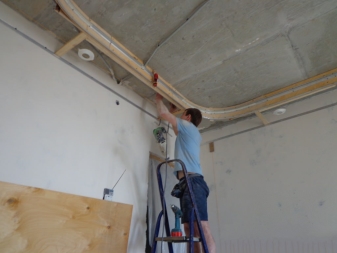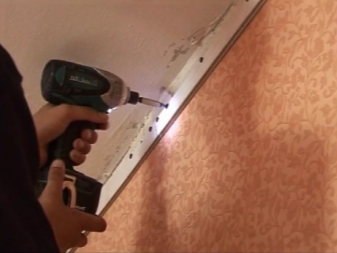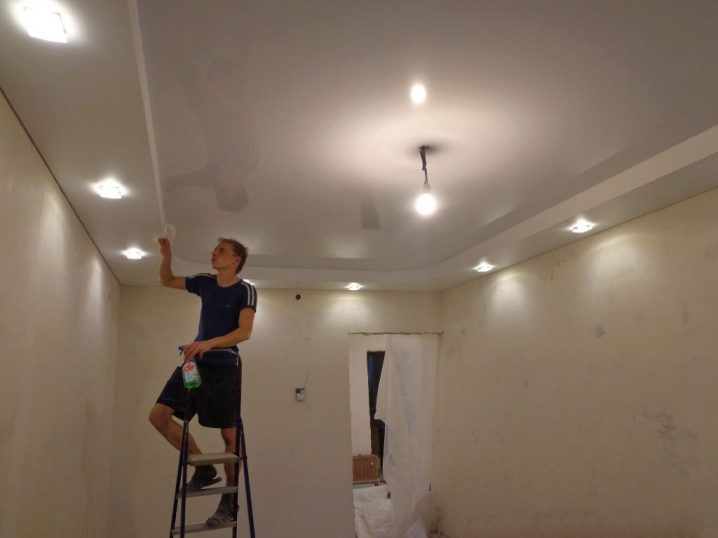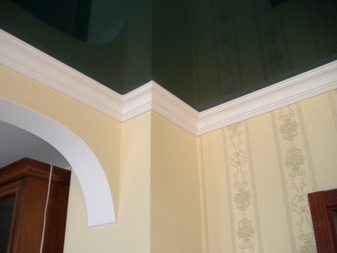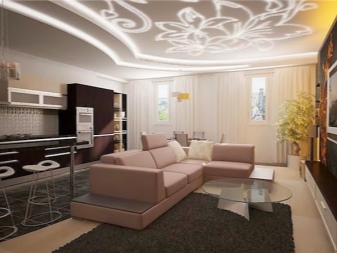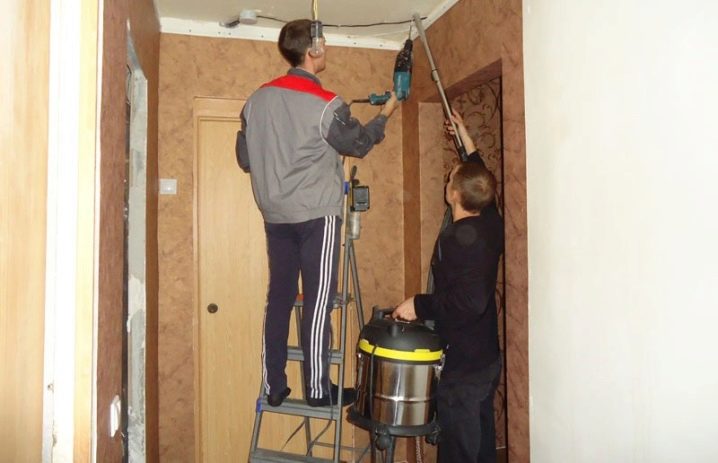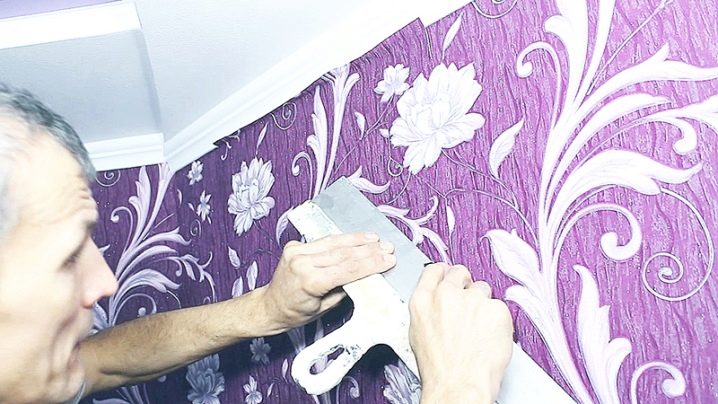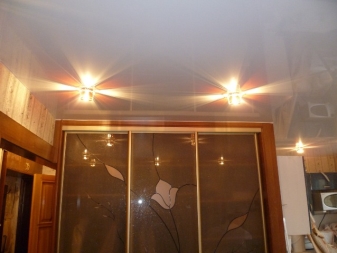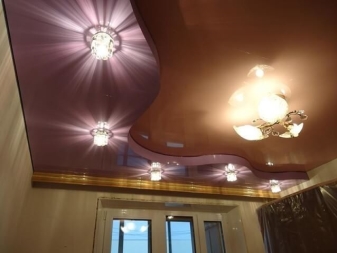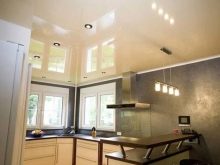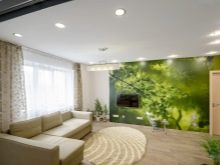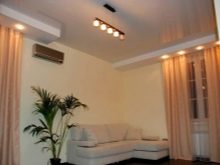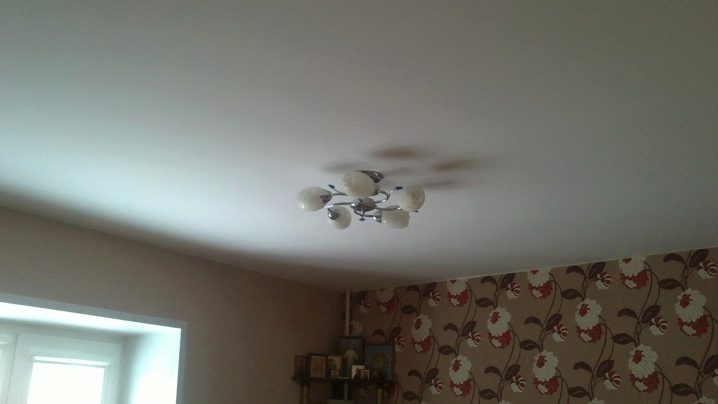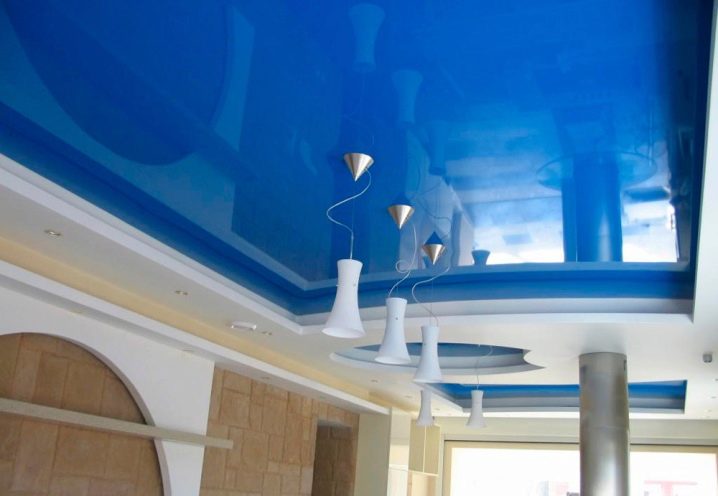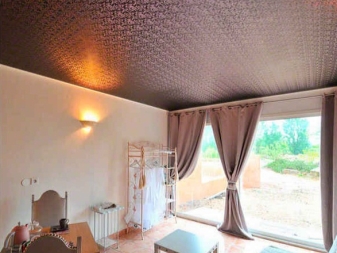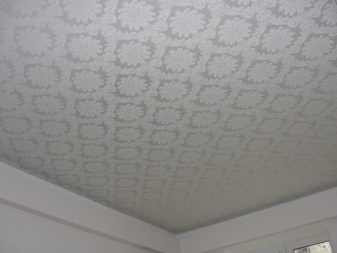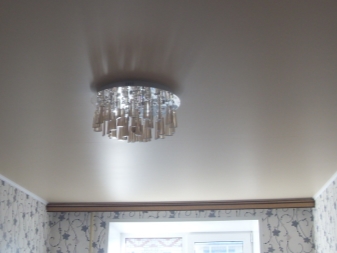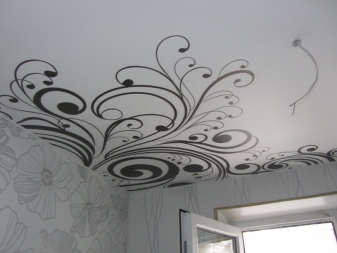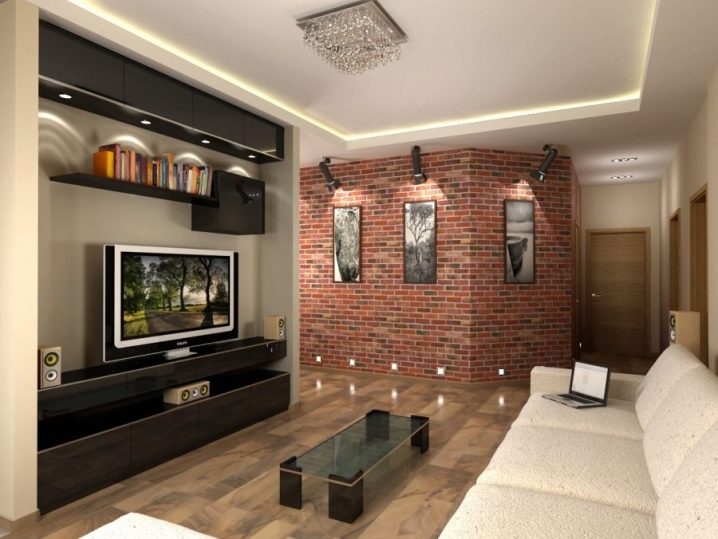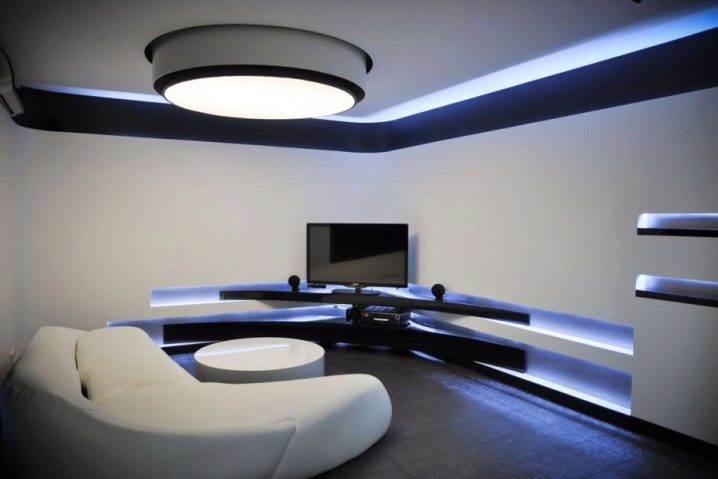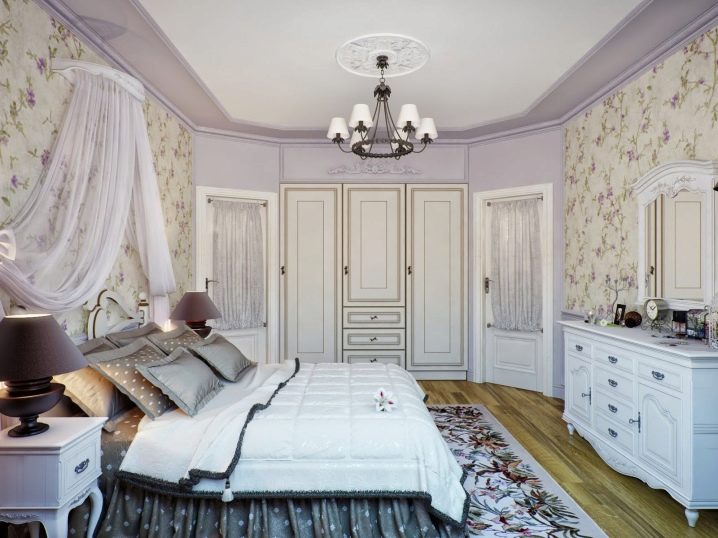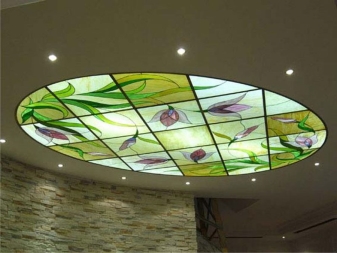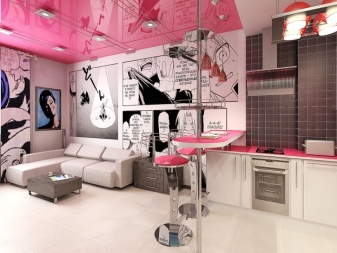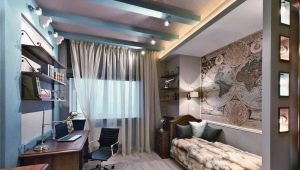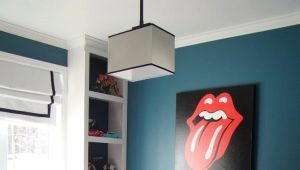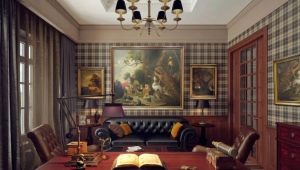What do they do first: glue the wallpaper or pull the ceiling?
The question of where to perform repair work before - on the walls or the ceiling, began to be asked from the very appearance of tension films.
I don’t really want to dust fresh gloss, which reflects the whole room. Expensive wallpaper is also a pity if they accidentally suffer while working with the stretch canvas. To understand this issue, we will try to gradually follow the process of repairing ceilings and walls.
Process features
Whatever work you have to do at first, each one will be at the expense of the other. When installing a baguette under the tensioning fabric, holes are drilled in the wall, which produces a lot of dust, and fresh wallpaper can suffer. In addition, the installation of the canvas itself occurs with the participation of high temperatures. No one knows if this will appeal to wallpaper.
There is a way out. Carefully prepare the walls for pasting and invite experts to mount the baguette (do the most dusty work), then paste over the wallpaper and again invite workers to install the ceiling.The method is good, but there is one problem - the masters will not agree to such a protracted way of work.
To understand the features of the process, and at least come close to a clue what to do first, you need to try to figure out what the stretch ceiling and wallpaper.
The canvas itself is a fabric base or PVC product, which is matte and glossy. Mounted on a specially prepared metal or plastic frame.
If the ceiling was planned to be multi-level, all work with drywall should be done in advance.. First, the old finish is removed, the ceiling is well trimmed, otherwise in the future finishing debris will crumble onto the stretch canvas. Then comes the turn of the treatment of fungal spots (if any). Before installing the ceiling, all work with wiring must be completed.
Wall-paper - a rolled cloth of various types: paper, non-woven, vinyl. There were many to glue them on. To begin with, the walls are aligned, and a layer of glue is applied to the dried surface (if the wallpaper is paper, glue is applied to the canvas). Then the coating is placed on the base, well glued, air bubbles and excess glue are squeezed out with a roller.
There is nothing difficult in this, but there are two types of developments: either the wallpaper is pasted over the ceiling mounting and pressed down with a baguette (look neat in this case), or after the top of the canvases you will have to be carefully cut, trying not to harm the ceiling structure.
What is the sequence?
Let's try to understand what is better: to stretch the suspended ceiling before wallpapering or after it. To do this, consider both options.
First wallpaper, then ceiling
If you decide to act in this way, it is worth considering the need for a break of 4-5 days between pasting the walls and installing the ceiling. Wallpapers should dry well before the heat gun.
Some experts believe that you should first work with the walls, ideally align them, otherwise the ceiling fabric may be skewed.
The main danger of pre-pasting is to contaminate the walls when working with a perforator.
If there are traces of bricks on the wallpaper, it will be quite difficult to remove them.
A vacuum hammer drill would help solve this problem to some extent. Gluing the sheets before installing the ceiling frame will lead to their getting under the baguette. He will press down the upper edge of the canvases, which makes it difficult to disassemble the wallpaper during the next repair.. The positive point is the perfect upper contour of the wall.
You can make a choice in favor of liquid coatings.. They are beautiful and modern, but the risk increases, working with a spatula, to stain the finished ceiling.
If you have to glue wallpaper for painting, the risk of staining the ceiling become even greater. On the other hand, high temperatures during installation can affect the quality of paint at the base of the ceiling. The same problem can occur with liquid wallpaper.
First the ceiling, then the wallpaper.
If the wallpaper is bright and delicate, in the process of installing the stretch ceiling, they can be irreparably damaged, so they are better to paste over in the last stage of repair. In addition, the lack of professionalism in working with the ceiling can lead to mechanical damage to the wallpaper.
Pasting the walls, care should be taken with the top edge of the canvases so as not to disturb the ceiling plugs. Everything will turn out, if you show diligence, but the next time you repair the wallpaper can be easily dismantled.
Both options have their pros and cons, but the responsibility for the choice always lies with the owner.
Important nuances
The question of priority has not been clarified. What to do before, to install suspended ceilings or to engage in walls? Pasting wallpaper, as well as the installation of the ceiling, have their own nuances. Working with the walls, there is a chance to damage or stain the tension fabric, and in fact it is actually eternal, while the wallpaper can be re-glued every year.
When they put the profile under the stretch ceiling, there is a possibility of wallpaper contamination, there is also a fear that they will not withstand the high temperature. In this case it is possible to abandon the PVC surface in favor of the fabric webwhich mount passes in the cold way.
And one more nuance - the profile under the woven ceiling requires more small-scale drilling, which means there will be less dust. However, well-dried wallpaper can easily withstand a temperature of 60-70 degrees.
Reheat the PVC film to soften it. The prepared canvas is immediately filled under the profile using special tools. The gap between the material and the wall is masked with plugs. They are the first to suffer from poor quality work with wallpaper.
An important nuance: any stretch ceiling can be mounted with wallpaper,even in a room furnished with furniture. Sliding wardrobes and curtains are also not a hindrance to this process. Just have to subsequently work with a vacuum cleaner. But, if the repair has just begun, you need to ask yourself the question many times what to do first.
But what if the repair is done long ago and you need to re-paste the wallpaper without damaging the ceiling? Dismantling should be done very carefully, especially if the wallpaper was pasted on the primary stage. and fell under the ceiling profile. They will have to be released without damaging the canvas.
To perform the work you will need a trowel and a construction knife. Carefully push the spatula between the ceiling and the knife. Moving them along the walls, slowly cuts the old wallpaper. In this way, you can protect the material from the cut, even if the knife jumps off.
Finishing is much easier to remove if you wet the walls with water and wait a while.
After reviewing the workflow, it was expected that we would immediately get an answer to our dilemma. The answer is no, you have to contact the experts.
Opinion of experts
Repairs are coming to an end and there is hope that the experts will shed light on the sequence of construction works.
Masters believe that it is better to glue the walls, and then install the ceiling. The arguments are the same: there is a risk to damage or stain the walls, in addition, high temperatures for fresh wallpaper are unfavorable. Perhaps these masters are afraid of responsibility for pripylennye walls.
Other experts, on the contrary, advise to mount the ceiling after pasting, fearing for the canvas, which can be damaged by a construction knife when cutting wallpaper. And glue and paint, falling on the canvas, spoil it forever.
There is no single opinion even among professionals, because the material for work, the room, various nuances - everything can be extraordinary, requiring an individual approach.
Successful examples and options
In conclusion, I would like to highlight the aesthetic component of the work done. If you see how beautiful the ceilings and wallpapers have become, the answer to the question of what to do before may turn out by itself. And it may not work out.
Stretch ceiling - has always been a decoration of the interior. It can be amazing and mysterious, like a country in the looking glass. With him the room is filled with colors, it seems more and lighter. Ceilings are of different types, have their own design and style.
Matte
Absolutely flat surface without a hint of reflection. The texture resembles a classic painted canvas. Apply to large rooms.
Haze is so neutral that it suits any style. Soffits will be a good ceiling equipment., or other sources of bright light, because the matte canvas does not reflect light.
Glossy
A good option for small rooms. They get the opportunity to visually doubled. Moreover, the dark gray canvas has a stronger reflectivity.
Spotlights (even a weak glow) on such a ceiling look like stars. By building multi-level compositions using gypsum board, and placing a canvas in them, they achieve the effect of an almost natural image of water or sky.
Fabric
Despite its textile origin, the canvas is still processed with polymers and acquires special strength.
Satin
The texture resembles satin (the surface is slightly shiny), and if you equip it with the appropriate pattern, it will be difficult to distinguish it from the fabric.
Choosing a stretch ceiling, you should consider the environment. The style should match the design of the room.
Let's give some examples.
Loft
The style that came from the industrial premises. It combines the incompatible: simplicity and exclusive, carelessness and pragmatism. Spotlights could well organize such a ceiling. The favorite decoration of the walls is brickwork, which must be worked on before the ceiling is installed.
High tech
He likes clear geometry and contrast. The ceilings are very smooth and smooth. The same applies to drywall constructions. Lighting works on the play of light and shadow. The walls are smooth, no frills.
Provence
The ceiling in this style is made from natural material. It should look perfect, but at the same time look simple. The colors are delicate, it is quite logical to arrange an ornament. Wallpapers can be natural types and inconspicuous tones. Well, if the picture coincides with the ceiling.
Pop Art
The style of fun youth. The ceiling will take any, even chaotic images, if only they were variegated. If the ceiling is bright but monophonic, all the violence of color should take on the wallpaper.
After reviewing the theme of the sequence of repair work, we can conclude that there are no universal recipes on this issue, and if there are, then the opposite.We'll have to weigh the pros and cons and make the wise decision ourselves.
Some tips on this can be found in the following video.
